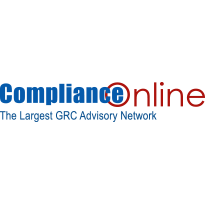Process Validation Guidance Requirements (FDA and EU Annex 15: Qualifications and Validation)
Austria, Vienna
The Process Validation Guidelines (January 2011) and the EU Annex 15: Qualification and Validation (October2015) outline the general principles and approaches the two regulatory bodies consider appropriate elements of process validation for the manufacture of human and animal drugs and biological products, including Active Pharmaceutical Ingredients (APIs). These guidances align Process Validation activities with a product lifecycle concept and with existing FDA and EU guidances, including the FDA/International Conference on Harmonization (ICH), Guidance for Industry, Q8 (R2) Pharmaceutical Development, Q9 Quality Risk Management, and Q10 Pharmaceutical Quality System. The lifecycle concept, new to these Guidances, link product and process development, qualification of the commercial manufacturing process, and maintenance of the process in a state of control during routine commercial production. These guidances also support process improvement and innovation through sound science and risk management. The new Process Validation Guideline/Practice incorporate elements of Process Validation as early as the Research and Development phase, and continues onward through Technology Transfer, into the Phase 1 IND Clinical Trial manufacturing phase, and ultimately into Phase 2 and 3, and then commercial manufacturing.
Each facility, whether producing small or large molecules requires both an overall Site Validation Plan as well as specific validation plans to manage the multiplicity of validations required to confirm the successful manufacture of each of its products.
Common questions asked by the users of Process Validation include :
- How does one integrate these two different concepts (Phase 1, 2, and 3 vs. Stages 1, 2, and 3) and where do they merge?
- Do they exist independently of each other or do they complement each other to enhance, build and provide a product that neither alone could. Questions that may arise include where are cGMPs initiated?
- To what extent must they be used? Since Stage 3 extends through commercial batch manufacturing, what happens to Phase 3?
- Does it follow along or with Stage 3? Questions that exist include how one manages special situations to include viral inactivation and removal, impurity clearance, process consistency, process solution stability, endotoxin, bioburden, and other miscellaneous cell culture tests to include DNA and host cell protein.
These questions will be addressed within Stage 2 as presented here and include utilization of Process Validation and Phase 1, 2 and 3, where their Guidances blend and where they remain distinct. In particular, Stage 3.
Important: Please plan to bring a multidisciplinary group from your Company to gain the most from this very important seminar.
Objectives :
Why these FDA Guidance/EU Guidelines for Industry - Process Validation is so important to the pharmaceutical and biotechnology industry.
- What FDA segments are included and excluded within the "NEW" Process Validation.
- Where does the Process Validation commence.
- What are the Three Stages and Where Do They Apply within the NEW Process Validation.
- How Stage 1 integrates with Phase 1.
- The Validation approaches that are included within this Guidance document.
- The Statutory and Regulatory Requirements for Process Validation.
- An Introduction tPhase 1 Guidance for Industry and Its Application within the "NEW" Process Validation.
- The Phase 1 Investigational Drug Requirements -- What is and What is NOT Required.
- General Considerations for Process Validation - Stage 2 Process Qualification.
- Regulatory Strategies for Phase 2 and 3 and their Incorporation within Stages 1 and 2.
- General Considerations for Process Validation - Stage 3 Continued Process Verification.
- A Review of EU Annex 15 and its Comparison tFDA's Process Validation Guidance.
Compliance online location :
- ComplianceOnline.com, MetricStream Inc.
- 2479 East Bayshore Road
- Suite 200
- Palo Alto, CA 94303
Registration contact :
- Name : Mohammad Irshad
- Email: Mohammad.Irshad@ComplianceOnline.Com
- Phone: +1 650-332-0381
- Fax: +1 650-565-8542
Day 1 : 8h30 AM - 5h00 PM
- 08.30 AM - 09.00 AM: Registration
- 09.00 AM: Session Start
- Introduction, Goals and Objectives, Definitions. Process Validation - Its Importance within the Drug Industry
- Interaction of the Three Stages with Process Validation
- Validation Approaches, cGMPs in Clinical Supply Manufacture, Special Manufacturing Situations within Phase 1
- The Requirements of Phase 1 Investigational Drug Requirements
- Regulatory Strategies for Phase 2 and 3 and their Incorporation within Stages 1 and 2
Day 2 : 8h30 AM - 4h30 PM
- General Considerations for Process Validation – Stage 2 Process Qualifications
- Special Considerations for Process Validation – Stage 2
- General Considerations for Process Validation – Stage 3 Continued Process Verification
- A Review of EU Annex 15 and its Comparison to FDA’s Process Validation Guidance
- Concurrent Release of Process Performance Qualification (PPQ) Batches
- Analytical Methodology and Process Validation; Warning Letter examples
Résumé
Barry A. Friedman, PhD, is a Consultant in the Biotechnology, Regulatory Compliance and Aseptic Processing Arena. Dr. Friedman possesses over 30 years of industrial managerial experience in various aspects of biopharmaceuticals and medical devices to include regulatory compliance, expert witness testimony, GLP/GMP, quality control, auditing, sterility assurance, microbiological/analytical validations and fermentation technology.
Prior to becoming an independent consultant, Dr. Friedman was associated with Cambrex Bio Sciences, a contract manufacturer of GMP bulk biopharmaceuticals located in Baltimore, Maryland. As the Director of Quality Control, he managed a multi-shift Department of thirty one individuals involved in client management, the receipt and testing of raw materials, environmental monitoring and microbiology, analytical chemistry and QC compliance for the production of Phase 1, 2, 3 and commercial products manufactured from bacteria, yeast and mammalian cells. In this capacity, Dr Friedman enjoyed many client and regulatory interactions, both domestic and international.
Prior to 2000, Dr. Friedman was the Laboratory Director for Chesapeake Biological Laboratories, a contract Aseptic Fill n’ Finish manufacturer located in Baltimore, Maryland. In addition to the professional history listed above, other associations have included W.R. Grace, Sigma Chemical Co., Sherwood Medical, Becton Dickinson, American Cyanamid and Union Carbide.
Dr. Friedman received his B.S. degree in Microbiology from Ohio State University, his M.S. from Michigan State University in Microbial Genetics, and his PhD from Ohio State University in Microbiology.

